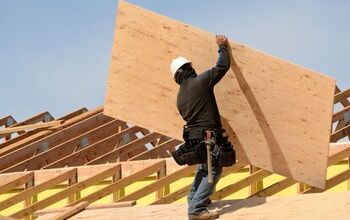How Much Does It Cost to Raise a Roof?

The home you bought years ago may no longer be capable of comfortably accommodating your growing family. At the very least, it may seem that way given how cramped it currently feels. Before you put down money on a new home, you may want to consider modifying your current place of residence first.
Raising the roof of your home can free up additional and you can use that to provide comfortable quarters for everyone. You may even be able to address nagging issues such as leaking by raising your roof. Do note that the aforementioned home modification procedure can be costly.
You should expect to spend $31,650 to raise the roof of your home. That total accounts for several expenses including architect and structural engineer fees, building permits, and roof removal. Homeowners must also pay for a new roofing structure and new trusses. The plumbing and electrical connections will also have to be reconfigured and don’t forget about reinstalling the siding.
If you want to make your home more comfortable for your growing family, raising its roof may be necessary. The aforementioned project will be costly, but its benefits are also very useful. Learn more about how much raising your home’s roof will cost by continuing with this article.
Do You Need Roofing, Siding, or Gutter Installers?
Get free, zero-commitment quotes from pro contractors near you.

Cost to Raise a Roof
| Expense Type | Cost |
| Structural Engineer Fees | $450 |
| Architect Fees | $2,900 |
| Building Permits | $1,000 |
| Roof Removal and Disposal | $1,300 |
| New Trusses and Reinforcement Elements | $15,000 |
| Rewiring Electrical Connections and Redesigning the Plumbing | $4,000 |
| Installing Siding and Other Finishing Touches | $7,000 |
Raising the roof of your home is not a decision to be made lightly. You must be certain that your household needs it because it is a major expense. On average, homeowners spend $31,650 if they want to raise the roof of their house.
So, why is the aforementioned project so expensive? That’s because numerous expenses are baked into it. Let’s further detail what those expenses are below.
Structural Engineer Fees
The first thing you must do if you want to raise your home’s roof is to speak with a structural engineer. The structural engineer will be the one to tell you if your plan to raise your home’s roof is even viable. You will have to pay an average of $450 for the structural engineer’s services.
Structural engineers evaluate if a particular structure can support a certain amount of weight. They will inspect the structure closely and determine if it needs to be reinforced or if it’s already good to go.
Homeowners are often required to work with structural engineers whenever they want to modify their place of residence. You want the structural engineer to tell you that your new roof is structurally sound. Avoid proceeding with the project without receiving their clearance first.
Architect Fees
In addition to the structural engineer, you should also partner with an architect if you want to raise your home’s roof. Hiring an architect will cost $2,900, but that’s a price you must be willing to pay.
The role of the architect in this project is to draw up the plans for your modified roof. They will work with the contractor and structural engineer to come up with a design that works best for your home. Of course, they will also gather your input throughout the design process.
Also, note that the architect’s fees are more likely to change compared to the other expenses involved in this project. Architect fees are commonly tied to the final cost of the project. You may not know how much you will have to pay until the job is done.
Building Permits
Before construction work on your modified roof begins, you have one more thing to take care of. That task is none other than securing the necessary building permits for the project. The permits that will be required for this specific project will cost $1,000.
Building permits are required for a reason. They let the local government know that projects completed within their jurisdiction were handled by licensed professionals. They assure that the project was not done haphazardly.
You do not want to skip out on the building permits. Once the local government discovers that permits were not obtained for your project, they will order you to re-do it. By trying to cut corners, you may just end up on the hook for even larger expenses.
Coordinate with your contractor to ensure that they have the permits before work begins. You can also secure the permits yourself if you have the time to spare.
Roof Removal and Disposal
With the plans drawn up and the building permits secured, you can proceed to the project proper. It starts with removing the existing roof. Removing the roof currently protecting your home will cost $1,300.
$1,300 is the average cost of roof removal, but that will change depending on the materials used for your household. Workers will charge more for roof removal if heavier materials were used.
If that number still seems high, remember that they are doing more than just removing your roof. They will also handle the disposal of the discarded roofing materials.
Gathering all that debris and waste can be tiring and time-consuming work. It would be nice to have other people handle it for you. The workers will handle the disposal of your old roof as long as you’re willing to pay.
New Trusses and Reinforcement Elements
The next step in the roof-raising project involves installing new trusses and building reinforcement elements. This is also the most expensive part of the project. Homeowners should expect to pay $15,000 for the new trusses and reinforcement elements.
The trusses are essential parts of your modified roof. They support the weight of your new roof and also spread it to other load-bearing elements. Trusses can also effectively minimize the weight of your new roof.
Trusses are considered money-savers because they allow you to use fewer materials for your construction project. You can leave the design of your new trusses up to your architect. For this type of project, a simple truss will do, but they may also suggest something different.
New trusses will be able to support the weight of your new roof, but they could still benefit from some reinforcement. The workers can add reinforcement elements to your new roof structure so the trusses are as strong as they can be.
Rewiring Electrical Connections and Redesigning the Plumbing
Do you have electrical connections and pipes that run up close to your roof? Even if you didn’t before, you’ll need them now since you’re turning that part of your home into a living space. The cost of rewiring electrical connections and rearranging your plumbing system is $4,000.
Hopefully, those alterations can be made without interfering much with the rest of your home. That’s not always the case, but it could be for your household.
Clear that matter up with the contractor before they start reconfiguring your wires and plumbing. Many of your home’s fixtures may be out of commission while they work on those changes. You need to be ready if that turns out to be the case.
Installing Siding and Other Finishing Touches
Last but not least, the workers will complete the project by installing the siding and applying other finishing touches. It’s the last step, but it is still expensive. You will have to pay $7,000 if you want this final step completed.
This is also a good time for you to consider the kind of siding covering your home. Are you content with what you have or would you like to try out a different material? If you’re interested in new siding, now is the time to make the switch.
Additional work on your roof may include painting and making minor fixes. You can make changes to the design of your new roof, but that will cause your expenses to spike.
Do You Need Roofing, Siding, or Gutter Installers?
Get free, zero-commitment quotes from pro contractors near you.

Related Questions
How Long Does It Take to Raise a Roof?
Raising your roof is going to take a while. It’s not the kind of home improvement project that can be completed over a single weekend.A more realistic timeframe for this type of project is five weeks. Consider the length of the project when trying to select the best time to start it.
Is an 8-Foot Ceiling Too Low?
There was a time when 8-foot ceilings were considered the standard for most homes. These days, 9-foot ceilings are more common.Note that you don’t have to raise an 8-foot ceiling. If you’re comfortable with that ceiling height, it can even be beneficial to your household.
Is a Pitched Roof More Expensive Than a Flat Roof?
Pitched roofs do cost more than flat roofs. That should come as no surprise since the former tends to be more complex. Keep that in mind as you decide between those options.

Gary Evans is passionate about home improvement. He loves finding out how to make improvements in the easiest, most practical, and most affordable ways. Upgrading his home kitchen is one of his ongoing hobbies. Gary is also a long-time content creator and enjoys spending his free time tending to his hydroponic vegetable garden.
More by Gary Evans












![How Much Does Roof Inspection Cost? [2022 Rates]](https://cdn-fastly.upgradedhome.com/media/2023/07/31/9092683/how-much-does-roof-inspection-cost-2022-rates.jpg?size=350x220)














